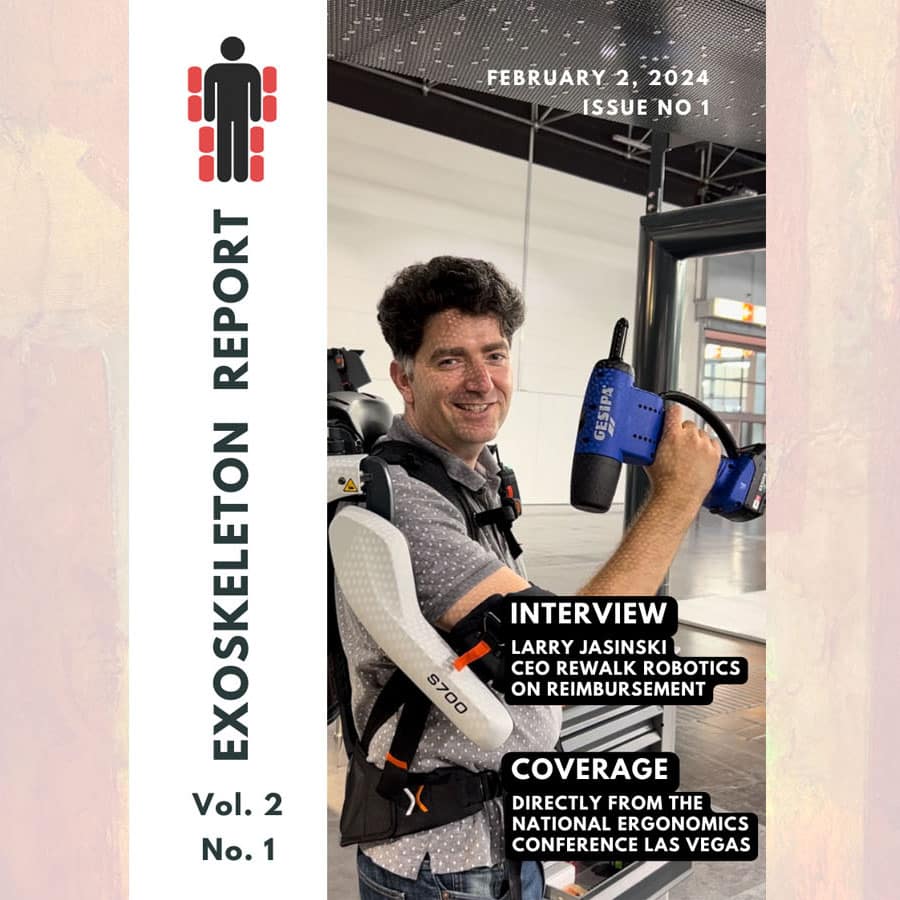ExR › Forums › Exoskeleton News › Call for Exo Papers or Submissions › Call for Papers Safe Patient Handling and Mobility – Challenges and Opportunities
- This topic is empty.
-
AuthorPosts
-
-
June 8, 2021 at 8:42 pm #6746
International Journal of Industrial Ergonomics
Manual patient handling is one of the most hazardous occupational tasks for a caregiver and a patient, leading to significant risk of employee work-related injuries and adverse patient events. Patient handling activities such as transfers, repositioning, limb holding, activities of daily living, and ambulation involve considerable physical effort and specialized skill from the caregivers. Safe patient handling and mobilization technologies can reduce the risk of musculoskeletal injury to caregivers, reduce falls and injuries to patients, and increase the likelihood that patients are mobilized thereby improving health outcomes. Despite the benefits of safe patient handling equipment, compliance is often poor, and challenges faced by caregivers in different types of healthcare facilities are multifactorial. For example, some organizations lack the necessary equipment; some patient handling situations are not easily addressed by the current equipment; some caregivers are hesitant to use equipment either due to lack of adequate training, the misperception of the equipment use taking too long, or refusal to change habits of past practice. Even with the availability of lifting equipment, system issues can exist which can derail the program such as lack of a specific policy and procedures, failure to use a patient mobility screen for safe decision making, inadequate amount or size of slings and poor process for laundering and storage. Some states in the country still do not have mandatory standards or regulations for safe patient handling and attempts at passing a national law have waned. The aging of our population has led to an increase in home healthcare services in the last decade. However, mobilizing individuals in a home setting is challenging due to availability of patient handling equipment and lack of control over the work environment.
With this special issue, we would like to bring both quantitative and qualitative research in patient handling and mobility issues to advance the practice of safely mobilizing patients. Translating research findings into clinically meaningful evidence is important so that caregivers, practitioners, managers, and regulators can apply these findings in developing mitigation strategies for various work environments.
This special issue invites original research articles, systematic reviews, emerging issues, usability studies, and practitioner case studies that bridge the gap between research and practice in the following areas of patient handling and mobility:
• Ergonomics challenges and musculoskeletal injuries during patient handling
- Risk assessment tools (including reliability and validity) for patient handling
- Biomechanical and physiological Responses during patient handling
- Evaluation of patient handling technologies, including studies of usability or safety
- Patient handling issues in different patient care environments (e.g., Ambulatory, Acute,
Long-term Care, Skilled Nursing Home, Homecare and Hospice, Firefighters and
Emergency Medical Technicians, Surgery, Vehicle extraction, etc.)
- Regulatory and compliance Issues and challenges (e.g., within and beyond country)
- Patient (mobility) screens and assessment tools and their reliability and validity
- Research on mobilizing special patient populations such as patients of size
- Efficacy studies of education curriculum and training (e.g., development of evidence-
based practice curriculum, Duration of training for annual compliance)
- Decedent handling issues and challenges
- Safe patient handling Programs and Return on Investment studies (including safety
culture)
- Role of exoskeletons in patient handling
- Special patient handling situations (e.g., donning Personal protective equipment and
Covid patient care, proning for Acute Respiratory Distress Syndrome or Covid patients)
- Improved patient outcomes with use of patient handling equipment.
- Built environment and human factors design challenges for safe patient handling.
We will adhere to the strict peer-review policies of the International Journal of Industrial Ergonomics for acceptance and rejection decisions of submitted manuscripts (https://www.editorialmanager.com/ergon/default.aspx). Case studies should inform a reader why the cases were challenging, how they were assessed, the type of mitigation strategies developed, how a reader can replicate the interventions presented in their clinical environment, and lessons learned from the case studies.
Tentative Deadlines
Submission ‘Special Issue’ Portal Opens: Author Submission Deadline:
Reviews Feedback Deadline:
Special Issue Print:Neal Wiggermann, PhD, CPE
Hill-Rom Research and Development Batesville, IN, USA
1 June 2021
1 September 2021 1 November 2021 1 March 2022Guest Editors
Leslie Pickett, DPT, CPEBETA Healthcare Sacramento, CA, USA
Rammohan Maikala, PhD, ASP
Providence St. Joseph Health Everett, WA, USA
-
-
AuthorPosts
- The forum ‘Call for Exo Papers or Submissions’ is closed to new topics and replies.

